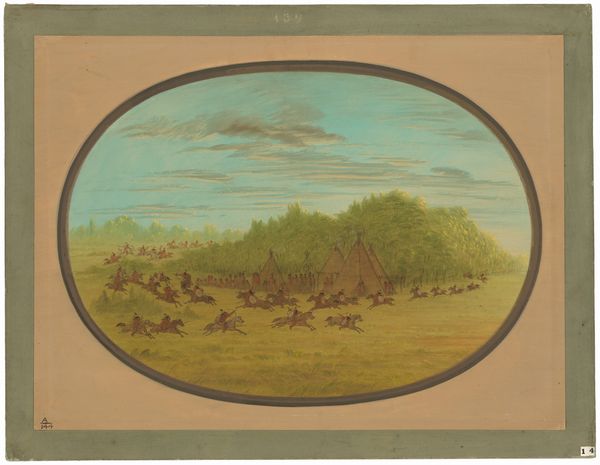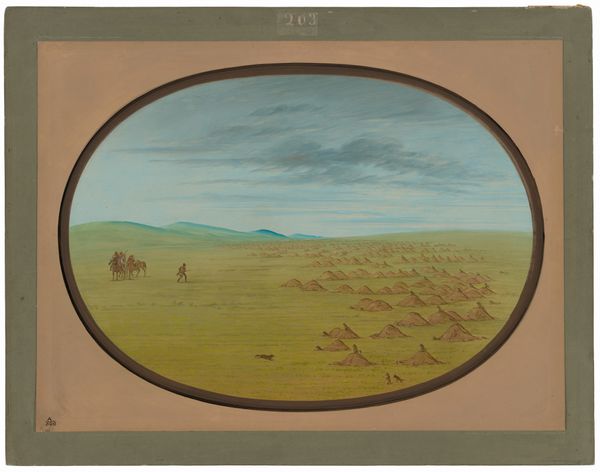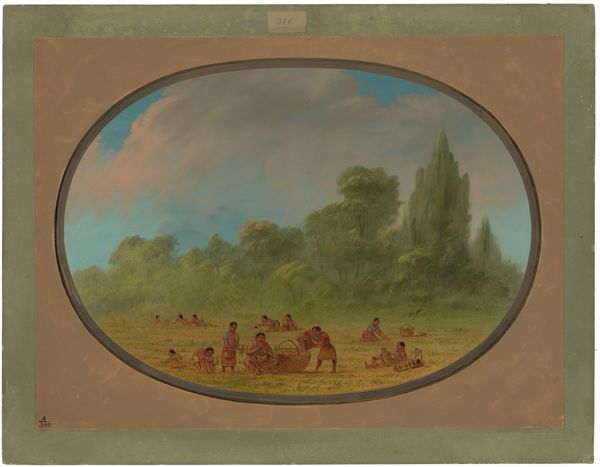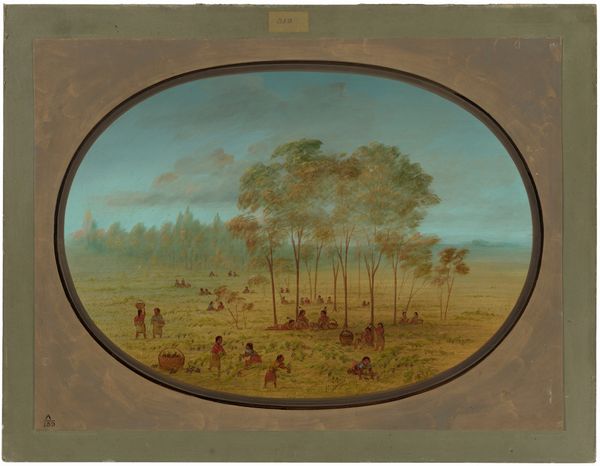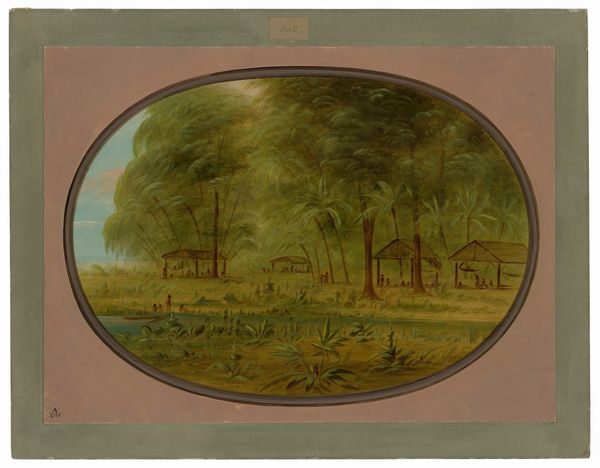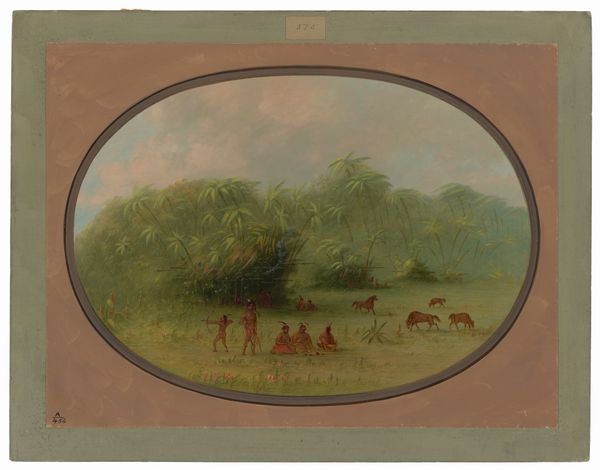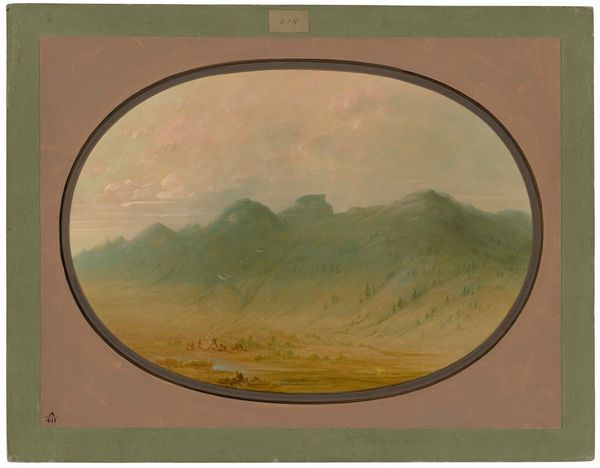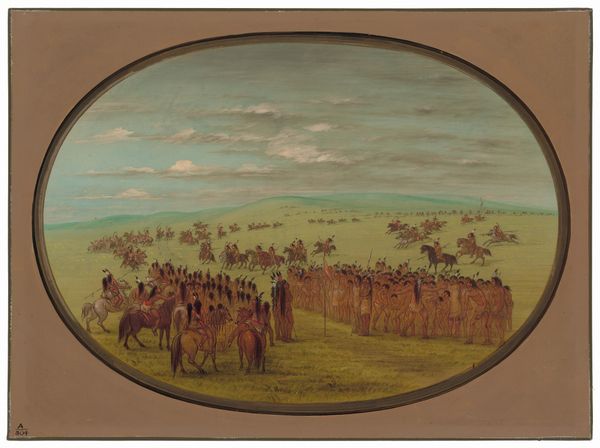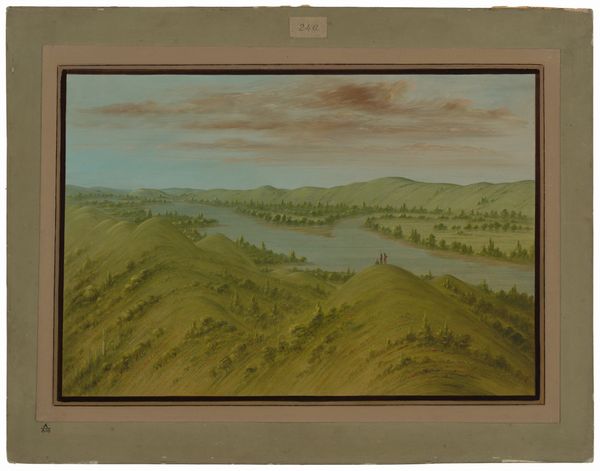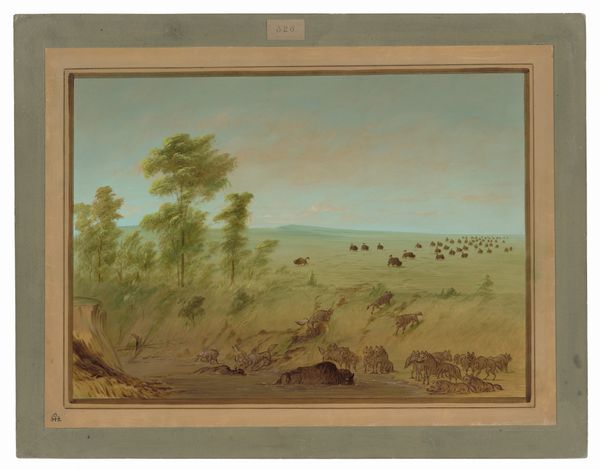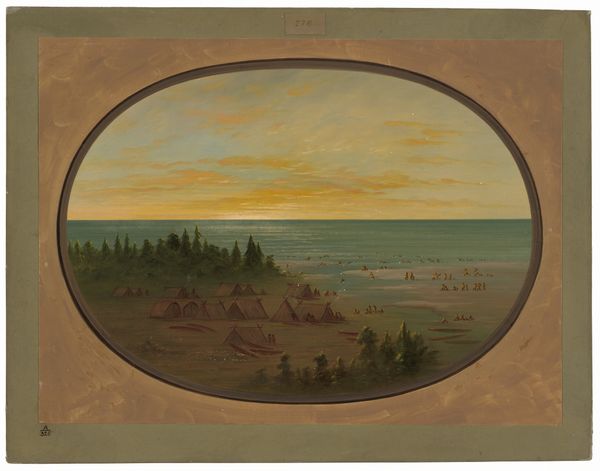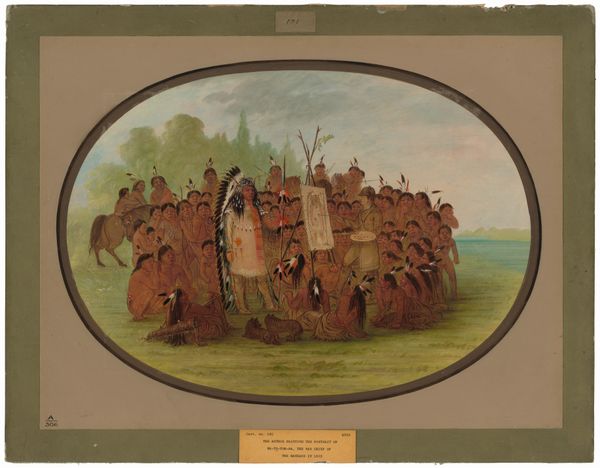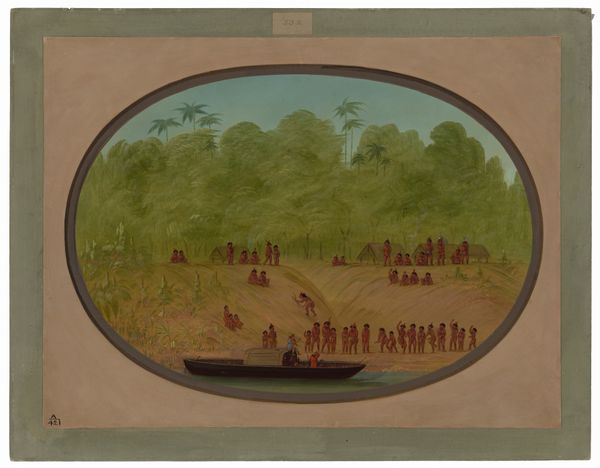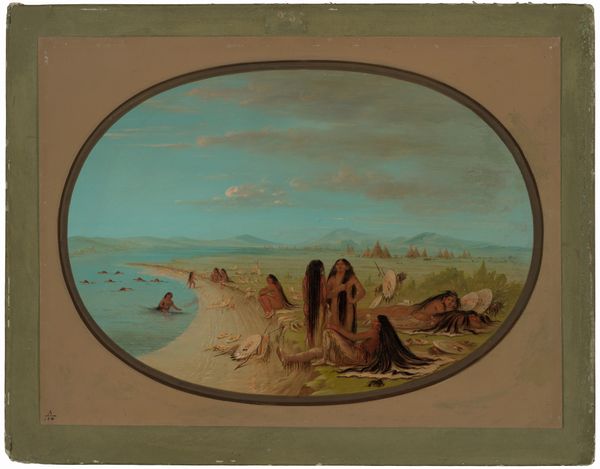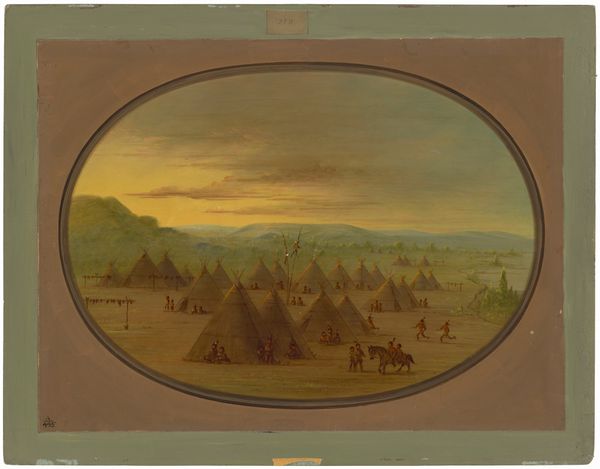
painting, oil-paint
#
water colours
#
painting
#
oil-paint
#
landscape
#
watercolor
Dimensions: overall: 47.5 x 64 cm (18 11/16 x 25 3/16 in.)
Copyright: National Gallery of Art: CC0 1.0
Curator: Here we have George Catlin's "Fort Pierre," created between 1861 and 1869 using watercolor. Look at the scope of the landscape captured within the oval frame! Editor: It strikes me as both incredibly serene and incredibly sad, if that makes sense. The soft, muted colours give a sense of peace, almost idyllic. But then you realize you're looking at a vast, soon-to-be-disrupted way of life. Curator: Exactly! Catlin dedicated much of his life to documenting Native American life in the American West. His work acts as both a historical record and, knowing what would happen next, a form of protest. The sheer scale here, all those tipis dotting the landscape, represents a thriving community. Editor: And note the vantage point – we’re positioned on a rise, overlooking the scene. Are we meant to feel like observers, outsiders? I'm also wondering about the palette itself, and whether it softens the impact of what he is trying to portray here. There's almost a nostalgic haze over everything. Curator: That's an interesting point. It certainly distances us, though perhaps intentionally? Or maybe it's simply the effect of time and watercolor as a medium. But the act of documentation itself—was that a tool of preservation, or a component in the process of the culture being transformed? There's complexity here. It feels immediate, yet filtered. Editor: I agree. The artistic rendering shouldn't overshadow the fact that these landscapes and settlements were on the cusp of radical, often violent change, and that perspective feels ever present within Catlin's legacy and impact. And here in "Fort Pierre," it becomes an unspoken undercurrent beneath the serene landscape. Curator: It's as though the quiet beauty serves as a constant reminder of what's at stake, a fragile balance suspended in time. And I wonder, viewing this through today's eyes, is there a way to be better custodians? Perhaps by acknowledging these painful histories, artworks like this can contribute to our present discussions and even our possible future pathways? Editor: Absolutely, by creating space for diverse voices and recognizing the ongoing legacies of colonialism and displacement within a more inclusive understanding.
Comments
No comments
Be the first to comment and join the conversation on the ultimate creative platform.
